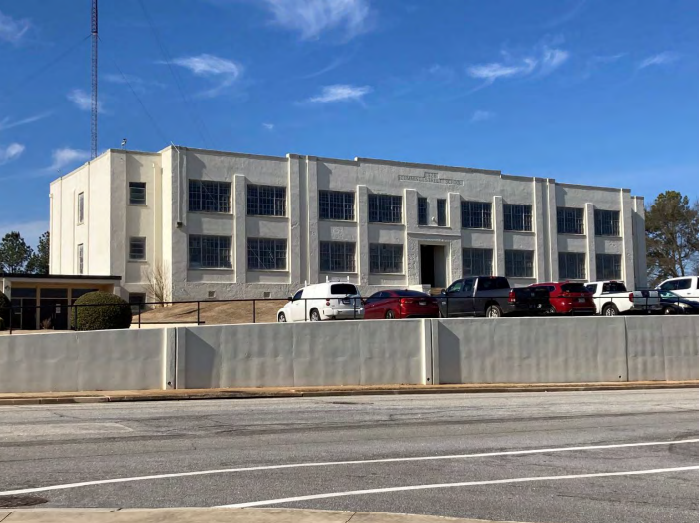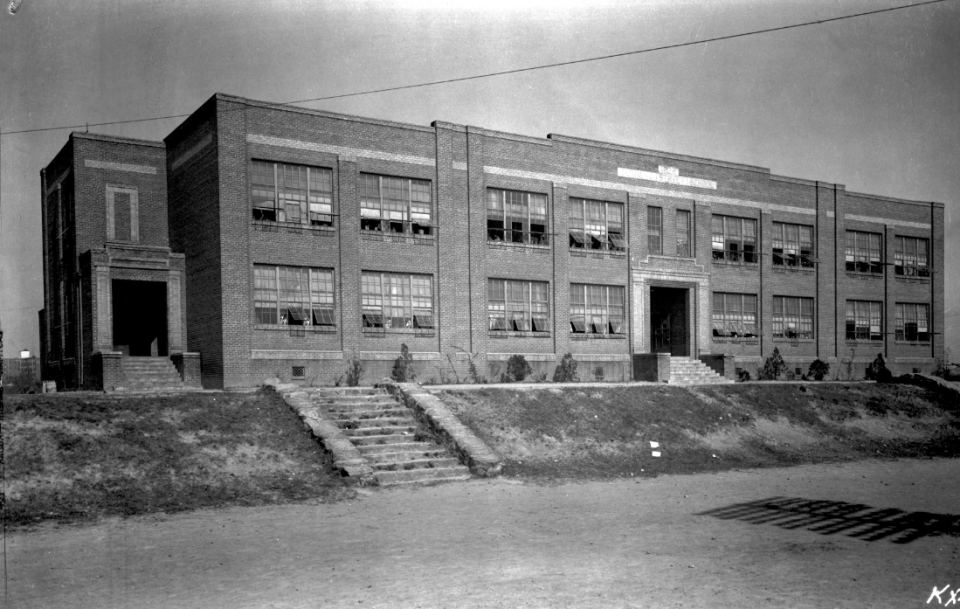How Spartanburg citizens helped get Cumming Street School on city's historic register

Cumming Street School opened as the first formal public junior high and high school for Black students in 1926 in Spartanburg. The school was segregated and had all Black teachers.
The school closed in 1969 after court-ordered desegregation in Spartanburg. Students were placed into other District 7 schools, most were sent to white schools after desegregation, according to Jim Neighbors, who leads a class at Wofford College on the neighborhood history around Cumming Street School.
"Cumming Street was a thriving school," Neighbors said. "It certainly could have become one of District 7's really significant junior high schools. But Black students were placed into white schools and some Black teachers were hired. Others, of course, were not.
"That from my perspective and history's perspective shows the sort of white supremacist thinking at work. The thinking among school board officials that the white schools had better teachers, better facilities, and Black students would benefit by being placed into a school that was controlled by white people."

Almost a century later, Spartanburg City Council voted unanimously on Monday, May 9, to add Cumming Street School, owned by Wofford now, to the city's local historic register after Brenda Lee Pryce and Neighbors led a petition drive.
Cumming Street School is now the eighth site to be added to the Spartanburg Historic Register.
Others are reading: Dorman, USC-Upstate grad Ludovic Nkoth’s bold, colorful artwork gaining worldwide acclaim
The addition would require any future development to maintain the historic exterior of the old Cumming Street School building. Interior changes would have to come before the Board of Architectural Design and Historic Review.

"I felt some kind of way when (the old Carver building) was torn down because it just took away that history that was so woven into our upbringing," said Glenda Sims, who went to Cumming Street from fourth to sixth grade. "It was a landmark that had a lot of meaning for us historically. Having those places to return to as part of reunions would just help you feel a sense of belonging to that place."
Spartanburg citizens 'comforted' by addition to historic register
After the demolition of historically Black schools including Highland Elementary, the old Carver High, and others, Horace Littlejohn is comforted that Cumming Street School would still remain a physical piece of his history.
"We caught the bus sometimes. We walked to school some other times," said Littlejohn, who went to Cumming Street from 1956 to 1966. "It was close because I grew up on the north side of the street. It was the best thing. We had a nice cafeteria, and we put on plays."
In the now-lost historically Black neighborhood called "Back of College," Cumming Street School was an opportunity for its residents to receive a formal education during the time of racial inequity and segregation.

"Residents, particularly those who lived just north of the Wofford campus, called (the neighborhood) 'Back of College'," Neighbors said. "They also called it 'Back of the Wall,' in reference to the inaccessibility of the (Wofford) campus to residents at times."
According to Neighbors, Black residents who lived in the neighborhood said they were ushered off campus by Wofford security guards. He said some were told not to go onto Wofford's campus and to walk around it instead.
But the idea of segregation and discrimination didn't occupy the minds of Black students. Many students and families simply made the best of what they had.
For Sims, the imbalanced funding and resource allocation then was not something she noticed.

"Growing up during segregation, it was what we had available to us," Sims said. "Even now to understand that we didn't have the best resources, I can't say I was aware of that as a child. I felt that I was being educated the best I could at that time. And they give you the foundation to go further into college."
Similar to Sims, Littlejohn said he was too young to really think about the implications of segregation. However, one thing he remembers is constantly getting second-hand books from white schools.
"We got the hand-me-down school books from schools like Spartan High," Littlejohn said. "They were not always in perfect condition. We grew up in a segregated era, and we got secondhand resources. It wasn't like (Cumming Street School) was important to (the government then) here in Spartanburg. So yeah, it was just something you noted mentally."

Despite receiving less funding and other resources than white schools, the all-Black teachers and administrators at Cumming Street School made sure students stayed in school and received a rigorous education, Littlejohn said.
"The thing is, when I went there, if you didn't behave or if you didn't do well, the teachers knew where you lived, and they knew your parents. They could call your parents," Littlejohn said.

Sims would go on to teach nursing at the University of South Carolina Upstate. Littlejohn, who now serves as a Spartanburg Water commissioner, would go on after school to serve in the U.S. Air Force as Lieutenant Colonel.
"The persons who have money and are in power in Spartanburg, they didn't grow up in that community and they don't look at it out of the eyes of an African American," Littlejohn said. "They look at it out of the eyes of a business person. So they don't realize what it means to me, growing up in a segregated community. I would like to see it stay around. It's that one last thing that we can still touch, see, and feel."
This article originally appeared on Herald-Journal: Spartanburg adds Black Cumming Street School to historic register
